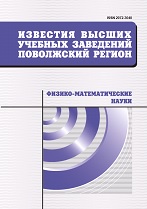|
|
University proceedings. Volga region. Physical and mathematical sciences, 2015, Issue 1, Pages 156–167
(Mi ivpnz313)
|
 |
|
 |
Physics
(Ti,Al)-composite materials, obtained by pressing with further sintering in the open air. Structure and properties
N. A. Pan'kin, V. P. Mishkin, M. A. Okin, A. F. Sigachev
Ogarev Mordovia State University, Saransk
Abstract:
Background. (Ti, Al)-composites are widely used at manufacturing of materials with high strength, thermal and corrosion resistance, melting temperature etc. The methods of composite material manufacturing include the methods of powder metallurgy. Despite a large number of literary data, devoted to the research of (Ti, Al)-materials, there still remain some questions on the influence of pressing and sintering parameters on end-use properties. The aim of the work was to research the structure and properties (density, hardness, thermal diffusivity) of (Ti, Al)-materials, obtained by cold pressing with further solid-phase sintering in the open air. Materials and methods. The powders of titanium (PTM-1 brand) and aluminum (PA-4 brand) were taken as the initial materials. The content of aluminum in composites was changing from 9 to 64 $\%$. Powder molding was carried out at 720 megapascals during 30 minutes at room temperature. Solid-phase sintering was carried out in the open air during 2 hours at 600 $^{\circ}$С. The research of (Ti,Al)-materials was conducted by the following methods: optical and electronic microscopy, the method of laser flash, x-ray diffractometry, hydrostatic weighing, measuremethe of the Brinell hardness. Results. The authors researched the dependence of the microstructure, phase composition, hardness, density and thermal diffusivity on the content of aluminum in the composite material. Due to the difference in mutual solubility of titan and aluminum there may occur the Kirkendall effect. The researchers also described the possible mechanisms of composite's phase compound formation. Conclusions. The (Ti,Al)-composite material contains three crystallographic phases: $\alpha$-titanium, aluminum and TiAl$_3$ intermetalloid (in the form of a plate crystallite), that is formed at the diffusion of aluminum into a crystal lattice of titanium with heat release. Differences in positions of diffraction lines of titanium and aluminum, relative to the corresponding ones for powder matrials, are associated with the occurrence of macrostresses at molding through annealing and recrystallization processes in the process of solid-phase sintering. Low values of the thermal diffusivity coefficient are associated with the presence of pores and interphase boundaries that lead to dissipation of a heat flow. The values of hardness (Brinell) and density monotonically fade away, and the coefficient of thermal diffusivity increases as the content of aluminum in the composite material grows.
Keywords:
composite material, pressing, sintering, hardness, phase composition, structure, thermal diffusivity.
Citation:
N. A. Pan'kin, V. P. Mishkin, M. A. Okin, A. F. Sigachev, “(Ti,Al)-composite materials, obtained by pressing with further sintering in the open air. Structure and properties”, University proceedings. Volga region. Physical and mathematical sciences, 2015, no. 1, 156–167
Linking options:
https://www.mathnet.ru/eng/ivpnz313 https://www.mathnet.ru/eng/ivpnz/y2015/i1/p156
|

| Statistics & downloads: |
| Abstract page: | 35 | | Full-text PDF : | 11 | | References: | 11 |
|




 Contact us:
Contact us: Terms of Use
Terms of Use
 Registration to the website
Registration to the website Logotypes
Logotypes








 Citation in format
Citation in format 